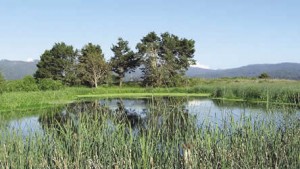State of Environment :: Eco Tipping Points
Eco Tipping Points
How a vicious cycle can become virtuous
by Amanda Suutari and Gerald Marten
From Earth Island Journal
Summer 2007
“The cicadas are in full voice on a sultry morning in May as we make our way along a rickety wooden boardwalk that snakes through a community mangrove forest near Thung Dase village in southern Thailand. The mangroves offer welcome shade near a dock where a small boat is moored. Handmade bamboo traps are set to catch mud crabs when the tides go out. In a flash of orange and turquoise, a kingfisher swoops to a low-hanging branch.
“It’s hard to imagine that three decades ago the area’s lush abundance was collapsing into a wasteland. ‘At one time,’ recalls Nom Ham Yak, chair of the forest’s management committee, ‘our economic base was crabs, fisheries, and rubber. Then areas were leased as concessions to private contractors to clear for charcoal, and the forest became badly degraded.’
“The prospects for the area’s villages were so bleak that a revival would have seemed a fantasy. What brought them back from the brink was an Eco Tipping Point.
“Eco Tipping Points offer a new paradigm for restoring our communities, both natural and human. Conventional approaches to ecological problems – from piecemeal micromanagement, to techno-fixes, to top-down regulation – often fail or generate new messes. But Eco Tipping Points show how the same forces that endanger environments and communities can be harnessed to heal them.
“To demonstrate what Eco Tipping Points are and how they work, consider two very different stories from two continents: the mangrove forests of Trang Province and the marshes of Arcata, California…” [read the rest and see more images here]




